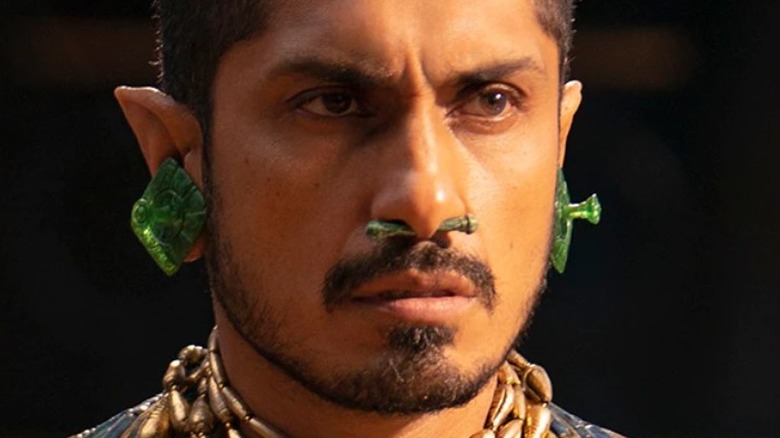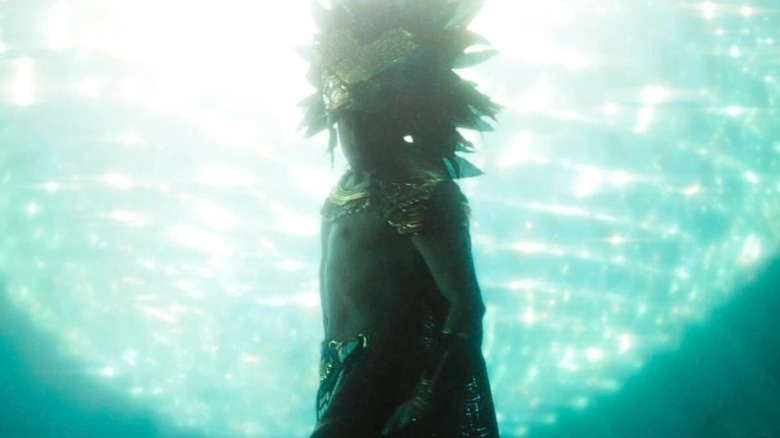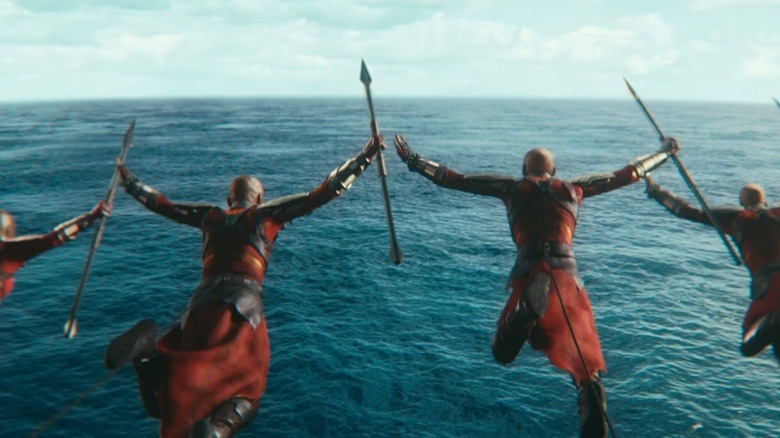Here's The Comic Book Story That Inspired Namor And Wakanda's Conflict In Black Panther 2
Contains spoilers for "Black Panther: Wakanda Forever"
One of the most devastating moments in "Black Panther: Wakanda Forever" comes when Namor (Tenoch Huerta) floods Wakanda's capital. The scene is brutal, with members of the once-untouchable nation scrambling to survive the attack, and fans on social media have been discussing the scene since the film's premiere. Redditor u/Sheck007 declared, "The flood of Wakanda is pure beauty."
Meanwhile, Twitter user @TheJessieWoo chose to focus on the resulting death of Queen Ramonda (Angela Bassett). "Angela Bassett better get her Oscar. That's all I know!" they tweeted. Speaking to Vanity Fair, Bassett acknowledged that she needed to hone her swimming skills to appear in the film, which features many water scenes. "Black girls have this history with water and their hair," Bassett explained. "Some of us can't swim all that well, because it's going to mess up that press and curl. It's a whole thing."
The specific shot of Namor flooding the nation of Wakanda actually has its origin in the comics, although he does so for very different reasons.
In the comics, Namor floods Wakanda in the name of mutants
In the 2012 crossover comic event "Avengers vs. X-Men," the Avengers and the X-Men find themselves locked in a battle based on their differing beliefs, with the two factions unable to agree on what will happen when the powerful Phoenix Force reaches Earth, and it's fast approaching. The X-Men believe it will lead to the rebirth of mutantkind, while the Avengers believe it will herald the end of all life in the world. After Namor, a mutant, is injured by the Scarlet Witch, an Avenger, he spearheads an attack on Wakanda against Cyclops' orders.
Obviously, the events leading up to Namor attacking Wakanda are very different in "Black Panther: Wakanda Forever," with the Talokanil flooding its capital city because the Wakandans refuse to hand over Riri (Dominique Thorne), the child prodigy who invented the vibranium-detecting machine. However, it seems unlikely that the scene in the movie was not inspired by the comic based on its emphasis on the struggle between mutants and more traditional superheroes.
Why Marvel hasn't said the M-word before
It's interesting to note that "Black Panther: Wakanda Forever" contains the second mention of a mutant in the MCU. Mutants and the X-Men haven't been covered much in the Marvel Cinematic Universe quite yet, mostly due to rights. According to Time, Marvel sold the rights to the X-Men in 1993 to avoid bankruptcy. This meant that, for most of the early years of the MCU, the rights to the X-Men were still owned by 20th Century Fox.
Now that 20th Century Fox has been purchased by Disney, however, the rights to the X-Men and things like the word "mutant" have finally come under one umbrella, but according to Vox, there are still a lot of complications in getting the X-Men to share the screen with the likes of, say, Groot (Vin Diesel). They'll have to do some finagling of the timelines to get the main characters from the X-Men into the 21st century, likely giving them new backstories to fit the modern age.
So far in the MCU, the purchase of the rights to the X-Men hasn't amounted to much except the rather brief cameo of Patrick Stewart as Professor Charles Xavier in "Doctor Strange in the Multiverse of Madness" and one mention of Kamala Khan (Iman Vellani) having a "mutation" in the "Ms. Marvel" Season 1 finale, "No Normal." However, Namor's confirmed status as a mutant and use of the word itself in "Black Panther: Wakanda Forever" is a game changer for the MCU.


